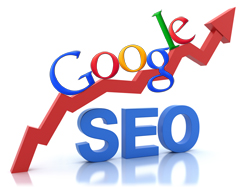It seems like starting a website should be easy enough – there are almost unlimited free online resources spouting off advice, it can be relatively cheap to launch a website, and, naturally, you have the best business idea for your website. So why is it that so many website startups fail?
1. Low Quality Web Design
One of the biggest mistakes that web startups make is having poor web design. Your website is the most important aspect of you company so why would you skimp on that? The overall design of your site is what initially draws people in, it’s what their first impression of you as a company is, so having a solid website design is crucial to your success.
2. Poor Content
In the same respect as low quality web design, having poor content on your site will be a huge turn off to people. To retain visitors you need to be able to provide content that wows them. You want to show anyone and everyone that visits your site the best you have to offer, so why would you fill your site with uninteresting or poorly written content?
3. Poor Marketing

Google is one of the best places to start your online marketing – both simple SEO and paid ads are are good place to start.
You can have the best website and the best content in the world, but if no one ever sees it then it won’t really matter, will it? You can never retain a customer if you can’t even catch their eye to begin with. This is why it’s imperative to spend ample time marketing on social media, through email campaigns, and through traditional marketing routes. You have to be willing to put time and money into your marketing scheme to achieve the best possible outcome – after all, you reap what you sow.
4. No Passion
Picking a niche market just because you think it will be profitable is one of the worst reasons to start a business. You have to actually be passionate about what you’re trying to make money off of, otherwise it’s going to be a lost cause and people will be able to see right through you.
5. Not Enough Funds
When you don’t allocate enough money for a startup company, you run the risk of forcing the company to fizzle out because you lack the proper funds to keep it going – or worse, you risk driving yourself into debt.
Get rich quick schemes rarely work in life and the same holds true for web startups. The road to success can only be reached by hard work, dedication, and money. So if you’re contemplating launching a startup business, make sure that it’s something you really want to do, otherwise you’ll be doing your potential customers and yourself a disservice.


